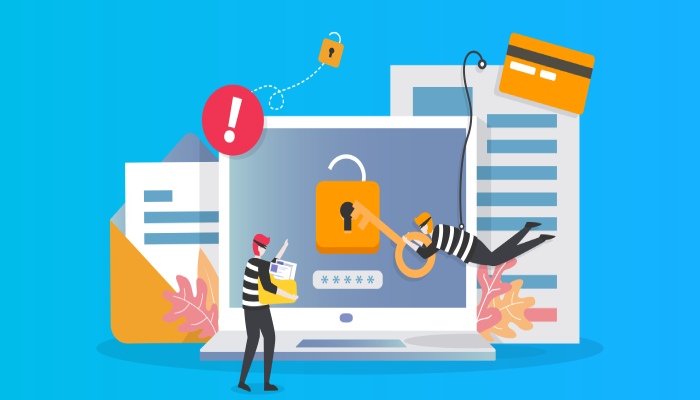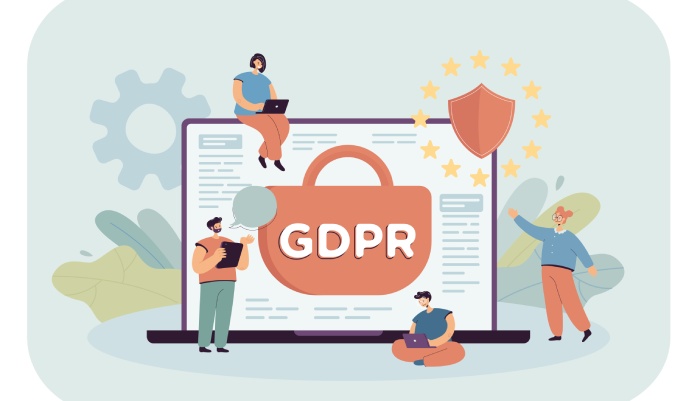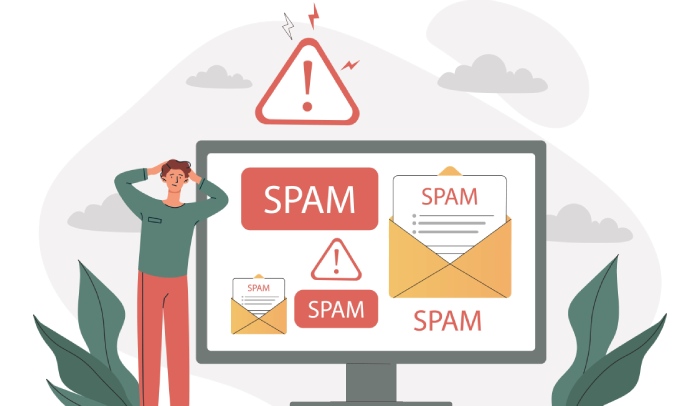10 Reasons SPF Filtering Is Critical For Email Security
The evolution of digital threats requires organizations to adopt robust email authentication methods. Among these, SPF filtering (Sender Policy Framework) stands as a foundational layer in defending business communications against cyber threats. By validating which mail servers are permitted to send emails on behalf of a domain, SPF filtering delivers powerful protection against spoofing, phishing, and other email-borne attacks. Below, we explore five of the most impactful reasons why SPF filtering is non-negotiable in contemporary email security strategies.
Shields Your Domain From Email Spoofing Attacks
The Mechanics of Email Spoofing
Email spoofing is a deceptive technique where attackers forge the sender’s address to make an email appear as if it originates from a legitimate source. Without proper controls, any malicious actor can send email using your organization’s domain, exposing your users and partners to scams, business email compromise, or even ransomware delivery.
How SPF Filtering Defends Against Spoofing
SPF filtering scrutinizes the originating IP address of incoming emails by performing an SPF check against the domain’s published SPF record in DNS. This record, formatted as a TXT record and governed by standards like RFC 7208, lists all authorized senders—the IP addresses or mail servers allowed to transmit email on the domain’s behalf. During the SPF validation process, the receiving mail server checks if the sender’s server matches those defined in the record. If there’s no match, the server can apply a hard fail (SPF reject policy) or a soft fail, depending on the SPF policy and qualifiers used.
For example, a properly configured SPF record example might include permitted Amazon SES, Microsoft 365, and Mailchimp servers, using mechanisms like include and a record or mx record, defined by precise SPF syntax. This prevents unauthorized use of your domain by identifying valid sources and stopping fraudulent emails before they reach the inbox.
Real-World Impact
Cybersecurity organizations like APWG and UpGuard consistently highlight SPF filtering as a top control to reduce exposure to phishing attacks and impersonation campaigns. Domains that neglect SPF filtering are prime targets for attackers seeking to bypass anti-spam measures by impersonating trusted brands.

Minimizes the Risk of Phishing Emails Reaching Users
Phishing and the Importance of Authentication
Phishing attacks remain one of the primary vectors for credential theft and malware delivery. By impersonating a familiar sender, cybercriminals can trick recipients with alarming ease, leading to data breaches or financial loss.
SPF Filtering as a Barrier to Phishing
With robust email authentication anchored by SPF filtering, organizations erect a tangible barrier against phishing. When a receiving email server analyzes the sender’s IP address against the SPF record, phishing attempts that spoof the organization’s domain will be flagged—or outright blocked—if not sent from authorized senders. This process provides an automated policy enforcement layer that complements both DKIM (DomainKeys Identified Mail) and DMARC (Domain-based Message Authentication, Reporting & Conformance) to provide defense-in-depth.
Policy Enforcement and Reporting
Comprehensive SPF filtering supports aggregate reporting and failure notification, informing domain administrators of potential spoofing or misconfigurations through mechanisms defined in DMARC. This visibility allows for quicker remediation and policy adjustments. Integrations with solutions like Easy DMARC and Proofpoint make it easier to interpret reports, trace the source of failures, and optimize mail flow to block phishing at its source.
Enhances Overall Email Deliverability Rates
The Deliverability Challenge
One of the most overlooked benefits of SPF filtering is its effect on email deliverability—the likelihood of legitimate email reaching the intended inbox. As spam and phishing attacks increase, spam filters and major mailbox providers such as Google Domains, Squarespace, Wix, DreamHost, HostGator, and hosted services like Amazon Web Services and HubSpot impose stringent checks on authentication signatures.
SPF Filtering and Spam Filters
Modern spam filters perform an SPF check as part of their anti-spam engine, evaluating the sending mail server’s status. Passing SPF validation signals that a domain’s owner has taken proactive steps to authenticate email traffic and identify permitted servers using their SPF policy. This not only improves trust but helps avoid being blacklisted by recipients’ filters.
How Syntax and Configuration Affect Deliverability
A well-formed SPF record must follow strict SPF syntax and respect boundaries, such as the lookup limit (10 DNS lookups) and character limit for TXT entries, to ensure consistent, error-free validation. Misconfigured records or excessive mechanisms—such as improper use of the all mechanism or redundant include mechanisms for third-party email provider services like Marketo or GetResponse—can result in failures and undelivered mail.
The Link With Other Authentication Methods
Organizations maintaining tight SPF alignment between their envelope sender and return-path increase compatibility with DKIM and DMARC, further reinforcing positive sender reputation and smooth mail flow.
Strengthens Organizational Reputation and Brand Trust
The Role of Trust in Modern Email
A domain reputation is inextricably linked to how its emails are perceived and processed across the global digital ecosystem. When users and automated systems see high rates of SPF validation and policy compliance, trust in the brand is reinforced.

SPF Filtering and Policy Enforcement
SPF filtering acts as a visible commitment to best-practice cybersecurity and anti-spam protocols. By enforcing an authentication method that rejects unauthorized email, organizations signal their proactive approach to safeguarding clients and partners. This is especially vital for sectors handling sensitive data or payments, as business email compromise and phishing scams can have devastating impacts on both finances and brand image.
Third-Party Providers and Hosting Platforms
Organizations leveraging services such as Mailchimp, Sendinblue, or Amazon SES must carefully coordinate SPF record creation and DNS settings—often guided via dashboards provided by registrars like GoDaddy or Google Domains. Failing to properly authorize these third-party email providers can result in SPF misalignment, putting brand reputation at risk and increasing the likelihood of record creation failures or inconsistent mail flow.
Blocks Unauthorized Senders Using Your Domain
Identifying Valid Sources and Permitted Servers
One core mandate of SPF filtering is to strictly designate which mail servers are permitted to send email on behalf of the domain. By specifying the ip address ranges (ip4, ip6), a records, and mx records in your SPF record, you ensure that only pre-approved sources can deliver messages. Any deviation prompts a hard fail (via the -all qualifier) or a soft fail (~all), based on the SPF qualifier set.
Preventing Unauthorized Use
Unauthorized use of your domain—whether by scam operators, ransomware distributors, or generic spammers—is effectively stopped at the perimeter. When an outsider attempts to send mail that doesn’t match an authorized sender, DNS-based SPF filtering instantly flags and isolates the attempt, preserving message authenticity. Administrators can also use aggregate reporting from DMARC setups to identify and respond to persistent threats or policy breaches.
Real-World Examples and Enforcement
Entities like Scamwatch have documented numerous scams perpetrated through spoofed emails. Implementations by organizations and platforms such as Microsoft 365 and Amazon Web Services illustrate that correct SPF filtering, when allied with DKIM signatures and DMARC reject policies, drastically reduces incidence of unauthorized mail, decreases risk of blacklisting, and keeps organizational domains off blacklists—preserving both deliverability and trust.
By implementing and carefully managing SPF filtering, organizations leverage a crucial authentication method that acts as a bulwark against evolving email threats, ensures only authorized senders can use their domain, protects recipient users from sophisticated phishing, and upholds the integrity and reputation of their brand in today’s high-stakes cybersecurity landscape.
Reason 6: Complements Other Email Authentication Protocols
Integrating SPF with DKIM and DMARC
SPF filtering is most effective when implemented alongside other robust email authentication protocols such as DomainKeys Identified Mail (DKIM) and Domain-based Message Authentication, Reporting, and Conformance (DMARC). Each protocol targets different aspects of email security, with sender policy framework (SPF) focusing on the “envelope sender” to confirm that an email comes from an authorized mail server specified in the domain’s DNS.
DKIM adds an authentication signature to validate that the email’s content has not been altered, ensuring message authenticity. When DKIM and SPF operate together under the oversight of DMARC, organizations can enforce a reject policy on unauthorized or suspect messages, significantly reducing the chance of successful email spoofing or phishing attacks.

Enhancing Email Deliverability and Trust
By layering email authentication methods:
- SPF checks the “return-path” and validates the IP address of permitted servers.
- DKIM verifies sender identity and data integrity through cryptographic signatures.
- DMARC leverages both SPF and DKIM results for policy enforcement, aggregate reporting, and setting failure responses (quarantine or reject).
This combined defense improves email deliverability, helps maintain the sending domain’s reputation, and provides comprehensive protection against both direct and indirect spoofing attempts.
Real-World Implementation
Platforms like Microsoft 365, Google Domains, and Amazon Web Services enable organizations to configure SPF, DKIM, and DMARC protocols in their DNS settings, guaranteeing that email sent via their services passes critical authentication checks. Anti-spam solutions such as Proofpoint and Easy DMARC centralize policy enforcement and aggregate reporting, making it simpler for businesses to identify valid sources and address failures systematically.
Reason 7: Reduces Spam Mail Flooding Your Inboxes
Mitigating Spam with SPF Filtering
Spam continues to be a pervasive threat to organizations, leading to productivity loss and increased risk of business email compromise and scam attempts. SPF filtering acts as a frontline filter, allowing only mail from IP addresses authorized in the SPF record. When a spammer tries to send unsolicited mail by forging the sender’s domain, the recipient’s email server performs an SPF check against the sender’s DNS-based txt record.
Impact on Spam Filters and Deliverability
When properly configured, a sender policy framework will result in a soft fail or hard fail for spam emails attempting to pass as legitimate. Most modern spam filters use the outcome of the SPF check—along with other signals—to block or quarantine messages detected as spoofed or not from an authorized sender.
For instance, tools like HostGator, DreamHost, Wix, and Squarespace all provide SPF record management features in their control panels, empowering domain owners to tightly control which email servers can legitimately send mail on their behalf. When spammers are denied this route, far fewer junk emails reach users’ inboxes, reducing the chance of end-user interaction with harmful links or attachments, and boosting overall email deliverability.
Integrating With Third-Party Providers
When using third-party email providers such as Mailchimp, HubSpot, Marketo, Sendinblue, or Amazon SES, including their permitted IP addresses via the “include mechanism” in the SPF record is essential. This ensures that legitimate campaigns avoid being flagged or blacklisted due to SPF failures, preserving sender reputation and enabling uninterrupted mail flow for marketing or transactional communications.
Reason 8: Supports Compliance With Industry Security Standards
Alignment with Regulatory and Industry Requirements
Many regulations—including GDPR, HIPAA, and PCI DSS—as well as frameworks recommended by entities like APWG and UpGuard, strongly encourage or require the use of robust email authentication. Through SPF filtering, organizations can demonstrate they have taken proactive steps to prevent spoofing, phishing attacks, and business email compromise, reinforcing commitment to cybersecurity best practices.

Policy Enforcement and Reporting
DMARC policies, when set using a reject policy, allow organizations to specify that unauthenticated emails should never reach end users. The synergy of sender policy framework, DKIM, and DMARC satisfies key controls in industry security standards and supports aggregate reporting—a requirement for continuous monitoring in many compliance programs.
Facilitating Audits and Oversight
Solutions such as Easy DMARC and Proofpoint automate SPF validation and generate clear, auditable logs, giving evidence that proper SPF syntax is enforced, lookups fall within the allowed lookup limit, and that the organization’s email authentication method remains aligned with the latest standards, including RFC 7208.
Reason 9: Provides Clear Reporting and Insight Into Email Sources
SPF Reporting Capabilities
By leveraging the reporting capabilities intrinsic to DMARC (which depends partly on SPF alignment and validation), organizations receive detailed feedback about their outgoing and incoming mail. Aggregate reporting captures data on who is sending on behalf of a domain, what IP addresses are involved, and whether those attempts fail due to improper SPF record configuration, unauthorized mail servers, or attempted spoofing.
Detecting Anomalies and Unauthorized Use
Regular review of these reports allows administrators to identify “rogue” IP addresses or third-party email provider misconfigurations before they impact reputation or email deliverability. Organizations can see which emails have been rejected due to a hard fail or quarantined due to a soft fail, analyze the SPF version, qualifier, and mechanisms used, and update their TXT record accordingly.
Value for Continuous Improvement
Vendors like Proofpoint, UpGuard, and Easy DMARC provide dashboards for tracking ongoing authentication results—giving a clear view of permitted servers, failures, and opportunities for DNS settings optimization. This data-driven approach empowers IT and security teams to refine their SPF policy, address lookup or character limit warnings, and remain ahead of evolving threats.
Reason 10: Forms a Foundational Layer for Future-Proof Email Security
Establishing a Secure Foundation
The sender policy framework’s adoption is not just an isolated control, but a foundational part of a modern cybersecurity strategy for email systems. Its widespread industry acceptance, support in anti-spam solutions, and regulation by standards such as RFC 7208 ensure it will remain core to authenticating email sources, identifying valid sources, and protecting against evolving tactics like email spoofing and new types of phishing attacks.
Enabling Scalable Policy and Technological Shifts
As mail flow becomes more complex with remote work, cloud adoption, and increasing reliance on third-party vendors, SPF record maintenance supports seamless scaling. Adding or removing IP addresses, adjusting policies for include, a record, or mx record mechanisms, and managing authorized senders all occur via DNS updates—requiring no invasive architectural changes.

Preparing for Next-Generation Threats
With cyberthreats such as business email compromise, ransomware, and sophisticated scams on the rise, organizations must stay agile. Proper SPF filtering and record creation set the stage for swift adjustments to authentication methods and rapid threat response. Comprehensive DNS-based authentication signatures, validated through SPF and DKIM, ensure message authenticity even as attacker techniques evolve. This adaptability not only maintains resilience today, but also enables organizations to integrate up-and-coming security innovations as part of ongoing defense efforts.
FAQs
What is an SPF record and why is it important?
An SPF record is a DNS TXT record that lists the IP addresses and domains authorized to send emails on behalf of your domain. It is critical for email authentication, preventing email spoofing and phishing attacks by allowing only legitimate mail servers to send messages using your domain.
How does SPF filtering reduce spam?
SPF filtering works by verifying the sender’s IP address against the list of authorized senders in the SPF record. Spam messages sent from unauthorized addresses will fail the SPF check (soft or hard fail) and are typically flagged or blocked by spam filters.
What is the relationship between SPF, DKIM, and DMARC?
SPF, DKIM, and DMARC are complementary email authentication protocols. SPF checks authorized sending IPs, DKIM verifies message integrity and sender authenticity, and DMARC enables policy enforcement and aggregate reporting while leveraging the results of both SPF and DKIM checks.
What happens if my SPF record exceeds the lookup or character limit?
If the SPF record surpasses the lookup limit (10 DNS lookups) or the character limit (255 characters per string, 512 per record), it can result in SPF check failures, potentially causing valid emails to be rejected or marked as spam. Careful record creation and regular audits can help avoid this issue.

Can SPF stop all email spoofing and phishing attacks?
While SPF filtering greatly reduces spoofing and phishing risk by restricting authorized sending sources, it cannot stop all threats. Attackers may use lookalike domains or other tactics, so combining SPF with DKIM, DMARC, and strong anti-spam solutions is essential for complete protection.
How do I update my SPF record when adding a third-party email provider like Mailchimp?
To authorize a third-party provider, update your domain’s DNS txt record with the “include” mechanism for the provider’s SPF domain, ensuring their IP addresses are listed as permitted servers. Follow provider-specific instructions and test for correct SPF syntax to maintain deliverability and avoid failures.
Key Takeaways
- SPF filtering is a core email authentication method that works alongside DKIM and DMARC for strong protection against spoofing and phishing.
- Maintaining an accurate SPF record in DNS ensures only authorized senders can use your domain, reducing spam, scams, and business email compromise risks.
- SPF supports industry security compliance, offers precise aggregate reporting for oversight, and delivers valuable insights on your domain’s mail flow.
- Consistent SPF record management with proper mechanisms (e.g., include, mx, a record) prevents policy failures, lookup/character limit errors, and ensures high email deliverability.
- As email infrastructure evolves, a well-maintained sender policy framework forms the foundation for scalable, future-proof cybersecurity defenses.






